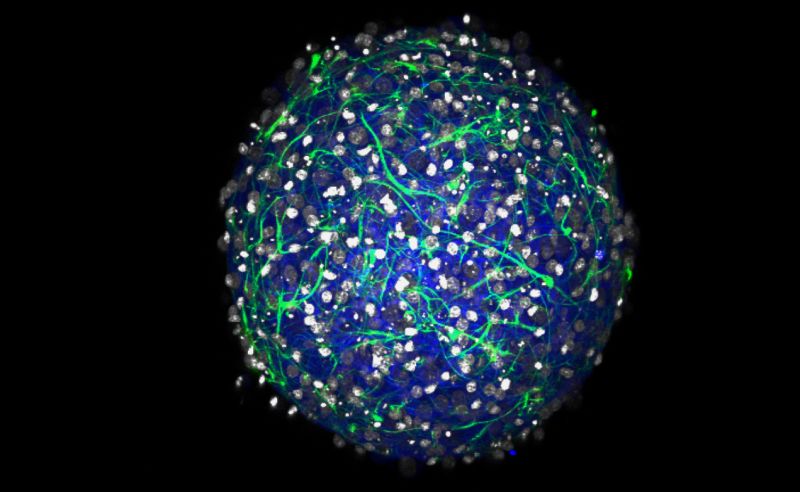Creating the future through AI-powered STEM research at the University of Arizona
The dawn of the artificial intelligence era is here, and with it comes an unprecedented opportunity to transform our world while addressing global challenges. The future people dream of is within reach, powered by the relentless pursuit of AI-driven STEM research. The scientific community stands at the forefront of this revolution and, together, can have the power to reshape the world for the better.
At the heart of this transformation lies a groundbreaking initiative funded by the U.S. National Science Foundation, the Revolutionizing STEM through AI in Applied Mathematics project at the University of Arizona. Led by Michael "Misha" Chertkov, this project is a testament to the outstanding potential of integrating AI into the realm of applied mathematics (AM). This initiative is not just a step forward; it is a quantum leap toward a future where AI and STEM converge to solve the world's most pressing challenges. Chertkov shares his vision with STEM research students and professors to "foster collaborations across disciplines and continuously reinforce the teaming platform through information sharing and brainstorming. The project includes 128 programs, 26 departments and six colleges, and we want to continue to grow it." The project aims to expand the teaming platform to other academic and industry organizations. Here is a summary of the project approach and observed outcomes.
Approach: Bridging disciplines and creating new paradigms
The NSF Innovations in Graduate Education (IGE) award at the University of Arizona is set to transform the graduate program in AM by incorporating AI. This initiative addresses the critical need for a workforce adept at navigating the interface between traditional AM and AI, particularly in response to national and global challenges.
In addition, the project aims to revolutionize STEM education and nontraditional research careers by modernizing the AM curriculum and aligning it more closely with contemporary needs in national security and industrial applications. The main goal is to create a robust pipeline of skilled researchers prepared to deliver solutions to industry and global challenges. This effort also seeks to broaden participation in STEM fields by attracting and preparing diverse groups of students for STEM research.
The project introduces a collaboration model that combines doctoral students, university advisors and co-advisors from national or industrial laboratories. This model fosters long-term research opportunities and internships, ensuring students gain expertise in traditional and contemporary AM, including data science and AI. By creating this bridge between academia and industry, the project ensures that graduates are not only well-versed in theoretical knowledge but also adept at applying it in real-world settings.
Implementation: A blueprint for success
This project addresses the challenges of crossing disciplinary divides while using AI in AM research, which addresses pressing, real-world challenges. By partnering with esteemed organizations, such as Raytheon and the U.S. Department of Energy laboratories, the project creates a seamless transition path for students between academic and industry environments. In addition, the project incorporates social science research to evaluate the outcomes of integrating cross-disciplinary fields within academia and industry collaborations.
The curriculum modernization aligns with national security and competitiveness needs and attracts diverse students, including women and underrepresented minorities, to pursue nonacademic STEM careers. A focus on diversity and inclusion is a crucial project component, as it ensures that the future workforce is skilled and reflective of the society it aims to serve. To expand participation in the program, "the program offers students the opportunity to augment their knowledge of algorithm development, robotics and diffusion models, with a focus on AI integration," explains Chertkov.
Impact: Paving the way for the future
The impact of this project is far-reaching. By integrating AI into AM research, the project generates new knowledge in STEM graduate education and creates a workforce capable of building AI-driven and mathematics-enabled solutions to pressing challenges. The emphasis on diversity ensures a broader, talented pool of well-prepared students for STEM careers.
As Chertkov summarized, "The outcomes of this project will pave the way for generalized models of STEM research workforce training, applicable to other STEM programs in academic and industry laboratories." Projects of this magnitude will make significant societal contributions by nurturing a diverse and globally competitive workforce equipped with extensive direct experience in traditional and AI-enhanced STEM fields, bridging the gap between academic and practical STEM applications.
Investing in the future of humanity
Inspiring projects such as Revolutionizing STEM through AI in Applied Mathematics project at the University of Arizona teach that the STEM research community has the power to shape the future. Additional exploration in AI-powered STEM research will continue to open relevant opportunities to partner across academia and industry to prepare more researchers and solve specific challenges. AI and AI-powered STEM research offers the potential to create an envisioned future.
Through its strategic funding of AI-driven projects, NSF is not just investing in technology; it is investing in humanity's future. By prioritizing ethical considerations, enhancing human-machine collaboration, fortifying cybersecurity and transforming educational paradigms, NSF plays a crucial role in developing a STEM workforce equipped to tackle global challenges with innovation and integrity. For researchers, educators and the public alike, NSF's initiatives offer inspiration and a call to action to participate in the continuously evolving field of AI-driven STEM.



